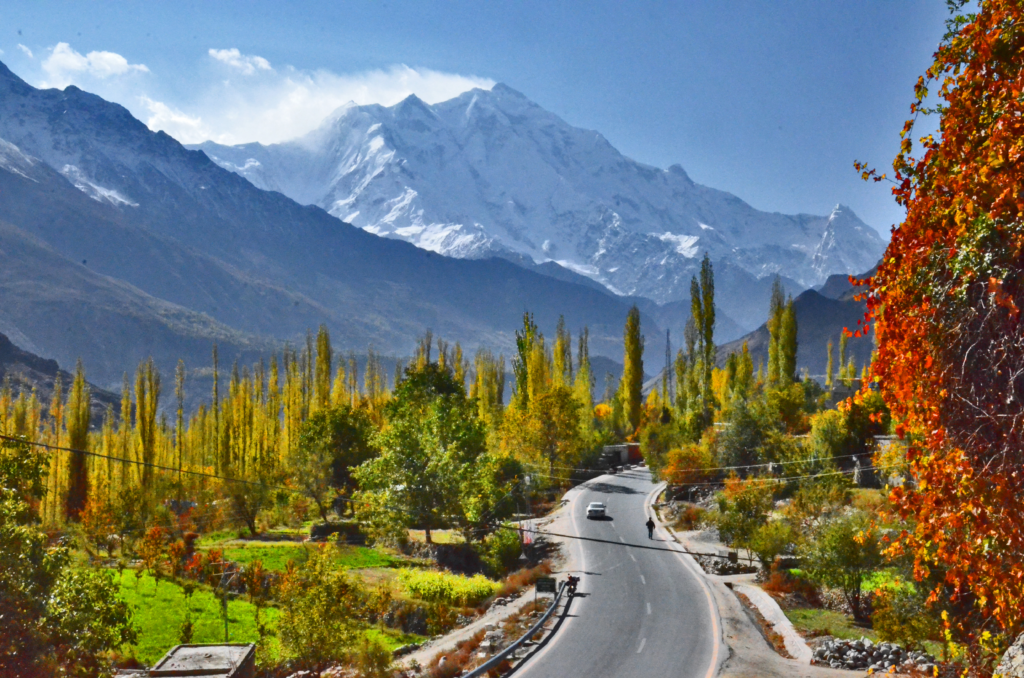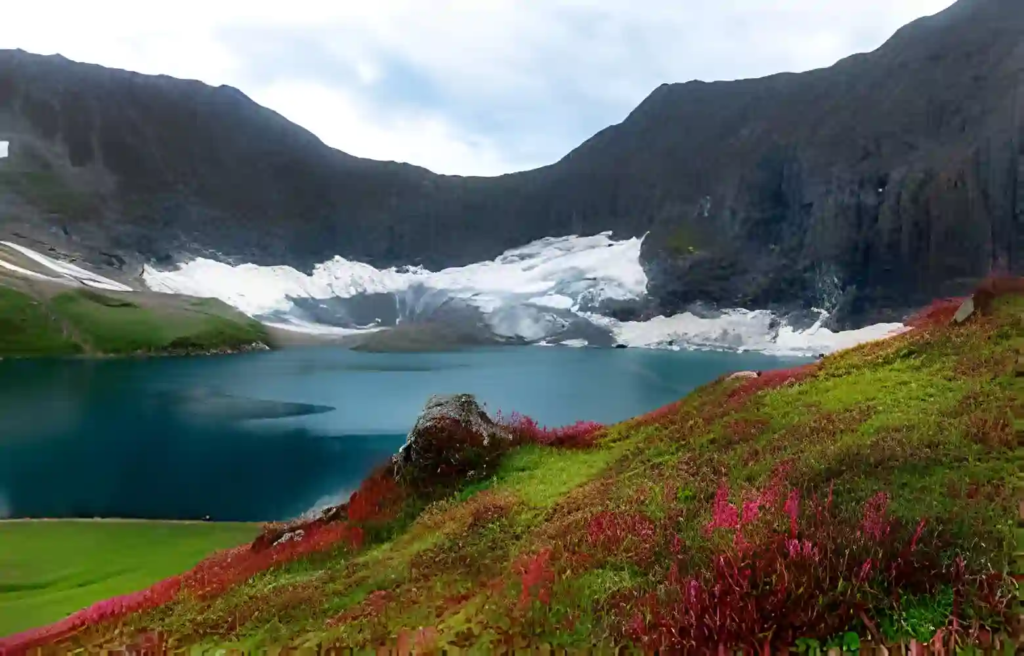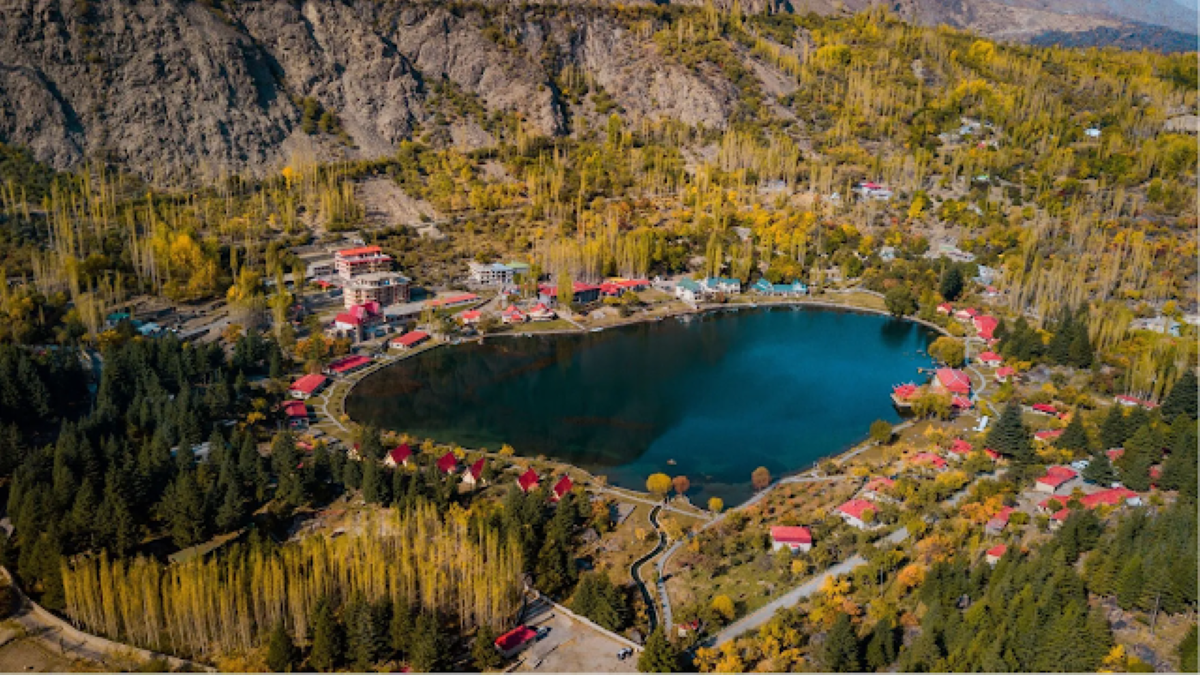Pakistan, officially the Islamic Republic of Pakistan, is a country in South Asia known for its rich history, cultural diversity, and strategic significance. Located at the crossroads of South Asia, Central Asia, and the Middle East, Pakistan offers a unique blend of ancient civilizations, vibrant cultures, and breathtaking landscapes. From the towering peaks of the Himalayas to the fertile plains of the Indus Valley, Pakistan’s geography is as diverse as its people. This blog delves into the enigma of Pakistan, exploring its history, culture, and natural beauty.
Table of Contents
Geography
Pakistan, covering an area of approximately 881,913 square kilometers, is the 33rd-largest country in the world. It shares borders with India to the east, Afghanistan and Iran to the west, and China to the north. The Arabian Sea lies to the south, providing a coastline of about 1,046 kilometers. The country is divided into four provinces: Punjab, Sindh, Khyber Pakhtunkhwa, and Balochistan, each with its distinct cultural and geographical features. The landscape ranges from the rugged mountains of the north, including K2, the second-highest peak in the world, to the arid deserts of the south.
States of Pakistan
Pakistan is divided into four provinces and four territories. The provinces are:
- Punjab
- Sindh
- Khyber Pakhtunkhwa
- Balochistan
The territories are:
- Islamabad Capital Territory
- Gilgit-Baltistan
- Azad Jammu and Kashmir
- Federally Administered Tribal Areas (FATA) – Note: FATA was merged into Khyber Pakhtunkhwa in 2018, but it is still sometimes listed separately in certain contexts.
Thus, there are four provinces and four territories in Pakistan.
Historical Tapestry
Pakistan’s history is a tapestry woven with the threads of ancient civilizations and empires. The Indus Valley Civilization, one of the world’s earliest urban cultures, flourished here around 2500 BCE. The ruins of Mohenjo-Daro and Harappa bear testimony to this sophisticated civilization, with its advanced urban planning and impressive architecture. Over the millennia, the region has witnessed the rise and fall of empires, including the Achaemenid Empire, Alexander the Great’s conquests, the Maurya and Gupta Empires, and the Islamic caliphates.
The Mughal Legacy
The Mughal Empire, which ruled the Indian subcontinent from the 16th to the 18th century, left an indelible mark on Pakistan’s culture and architecture. The magnificent Badshahi Mosque in Lahore, the Shalimar Gardens, and the Lahore Fort are exquisite examples of Mughal architecture. The Mughal influence extends to art, cuisine, and language, enriching Pakistan’s cultural heritage.
The Birth of Pakistan
The creation of Pakistan in 1947 was a momentous event in the history of South Asia. Born out of the partition of British India, Pakistan emerged as a separate nation for Muslims under the leadership of Muhammad Ali Jinnah, who is revered as the Quaid-e-Azam (Great Leader). The partition was marked by immense human suffering and mass migrations, but it also paved the way for the establishment of a new, sovereign state.
Cultural Mosaic
Pakistan is a cultural mosaic, with a rich tapestry of languages, traditions, and customs. The country’s official language is Urdu, while English is widely used for official and business purposes. However, Pakistan is home to numerous regional languages, including Punjabi, Sindhi, Pashto, and Balochi, each reflecting the distinct cultural identity of its speakers.
Festivals and Traditions
Pakistani culture is deeply rooted in its festivals and traditions. Eid-ul-Fitr and Eid-ul-Adha are the two major religious festivals celebrated with great fervor across the country. The festival of Basant, marking the arrival of spring, is celebrated with kite flying and vibrant festivities, especially in Lahore. Traditional music and dance, such as Qawwali and Bhangra, are integral to Pakistani culture, providing a glimpse into the country’s artistic heritage.
Culinary Delights
Pakistani cuisine is a tantalizing blend of flavors and aromas, reflecting the country’s diverse cultural influences. From the succulent kebabs and biryanis of Punjab to the spicy Sindhi curries and the hearty Pashtun dishes, Pakistani food is a feast for the senses. The use of aromatic spices, fresh herbs, and rich ingredients creates a culinary experience that is both unique and unforgettable.
Top Eight Most Famous Food of Pakistan








Natural Wonders
Pakistan’s natural beauty is awe-inspiring, with landscapes ranging from towering mountain peaks to lush green valleys and vast deserts. The northern regions of Pakistan, including Gilgit-Baltistan and Khyber Pakhtunkhwa, are home to some of the world’s highest peaks, including K2 and Nanga Parbat. These regions are a paradise for mountaineers and trekkers, offering breathtaking views and challenging adventures.
The Indus River
The Indus River, one of the longest rivers in the world, flows through Pakistan, providing life and sustenance to the fertile plains of Punjab and Sindh. The river is not only a vital source of water for agriculture but also holds immense cultural and historical significance. The ancient city of Mohenjo-Daro, located on the banks of the Indus, is a UNESCO World Heritage site and a testament to the ingenuity of the Indus Valley Civilization.
Desert Landscapes
The Thar Desert, located in the southeastern part of Pakistan, is a vast expanse of arid land dotted with sand dunes and sparse vegetation. Despite its harsh environment, the Thar Desert is home to a unique ecosystem and a vibrant cultural heritage. The annual Cholistan Desert Rally, a thrilling off-road race, attracts adventure enthusiasts from around the world.
Lakes and Valleys
Pakistan is blessed with numerous lakes and valleys that offer serene and picturesque landscapes. The stunning Hunza Valley, with its snow-capped peaks and terraced fields, is a popular destination for nature lovers and photographers. Lake Saif-ul-Mulook, located in the Kaghan Valley, is known for its crystal-clear waters and enchanting surroundings, often described as a fairy tale come to life.
Top Ten Most Beautiful Village of Pakistan
| # | Village | Location |
|---|---|---|
| 1 | Hunza | Gilgit-Baltistan |
| 2 | Fairy Meadows | Gilgit-Baltistan |
| 3 | Ganish Village | Hunza Valley, Gilgit-Baltistan |
| 4 | Matiltan | Swat Valley, Khyber Pakhtunkhwa |
| 5 | Ratti Gali Lake Village | Neelum Valley, Azad Kashmir |
| 6 | Arang Kel | Neelum Valley, Azad Kashmir |
| 7 | Passu | Hunza Valley, Gilgit-Baltistan |
| 8 | Phander Village | Ghizer Valley, Gilgit-Baltistan |
| 9 | Misgar Village | Hunza Valley, Gilgit-Baltistan |
| 10 | Birir Village | Chitral, Khyber Pakhtunkhwa |
Urban Centers
Pakistan’s urban centers are a blend of modernity and tradition, with bustling markets, historical landmarks, and vibrant cultural scenes. Karachi, the largest city and economic hub, is known for its dynamic atmosphere and diverse population. Lahore, the cultural capital, is famous for its historical monuments, gardens, and vibrant arts scene. Islamabad, the capital city, is renowned for its modern architecture, lush greenery, and serene environment.
Top Ten Must-Visit Destinations in Pakistan
1. Hunza Valley

Located in Gilgit-Baltistan, Hunza Valley is a breathtaking destination known for its stunning landscapes and hospitable locals. The valley is surrounded by towering peaks, including Rakaposhi and Ultar Sar, providing a picturesque backdrop. Visitors can explore ancient forts like Baltit and Altit, enjoy the tranquil beauty of Attabad Lake, and experience the vibrant culture of the Hunza people. Trekking routes such as the Ultar Sar Base Camp offer adventure enthusiasts a chance to immerse themselves in nature. The valley is also famous for its delicious apricots and other fruits.
2. Fairy Meadows

Fairy Meadows is a mesmerizing destination situated at the base of Nanga Parbat, the ninth-highest mountain in the world. This lush green meadow offers breathtaking views and is accessible via a thrilling jeep ride followed by a short trek. The area is ideal for camping, and visitors can enjoy stunning sunrises and sunsets against the backdrop of Nanga Parbat. Fairy Meadows is a paradise for trekkers, with trails leading to the mountain’s base camp. The serene atmosphere, coupled with the beauty of nature, makes it a must-visit destination for outdoor enthusiasts.
3. Mohenjo-Daro

Mohenjo-Daro, one of the most significant archaeological sites of the Indus Valley Civilization, is located in Sindh. This UNESCO World Heritage site offers a glimpse into one of the world’s earliest urban settlements, dating back to 2500 BCE. Visitors can explore well-preserved ruins, including the Great Bath, intricate drainage systems, and various residential structures. The site reflects the advanced urban planning and sophisticated culture of the Indus Valley people. Mohenjo-Daro serves as a vital link to understanding the history and heritage of South Asia.
4. Skardu

Skardu is a gateway to some of the world’s highest peaks, including K2, and is known for its stunning landscapes and rich cultural heritage. The serene Shangrila Resort, nestled by Shangrila Lake, offers a perfect getaway for relaxation. Skardu is also home to Deosai National Park, known as the “Land of Giants,” where visitors can witness diverse wildlife and breathtaking scenery. Other attractions include the ancient Skardu Fort, which provides panoramic views of the valley, and the mesmerizing Sheosar Lake, known for its vibrant colors.
5. Swat Valley

Swat Valley, often referred to as the “Switzerland of the East,” is renowned for its natural beauty, lush green valleys, and rich cultural history. The valley is dotted with charming towns such as Mingora and Kalam. The Malam Jabba ski resort attracts winter sports enthusiasts, while the scenic Kalam Valley offers opportunities for hiking, fishing, and exploring picturesque lakes like Mahodand. Visitors can also explore ancient Buddhist stupas and experience the vibrant local culture through traditional music and dance.
6. Ratti Gali Lake

Ratti Gali Lake, located in Azad Kashmir, is an alpine glacial lake surrounded by majestic mountains. The vibrant turquoise waters of the lake, especially during the summer months, create a stunning contrast against the lush green meadows. The journey to Ratti Gali Lake involves a trek through picturesque landscapes, making it a perfect destination for adventure seekers and nature lovers. The area is also home to diverse flora and fauna, adding to its natural beauty.
7. Naran Kaghan Valley

Naran Kaghan Valley, situated in Khyber Pakhtunkhwa, is famous for its stunning landscapes, lush green meadows, and beautiful lakes. Saif-ul-Mulook Lake, located near Naran, is a major attraction, known for its breathtaking views and myths surrounding its origin. The valley is perfect for trekking, camping, and fishing, with various hiking trails leading to scenic spots. Visitors can enjoy the tranquil atmosphere, explore nearby waterfalls, and indulge in local cuisine.
8. Passu Cones

The Passu Cones, located near the village of Passu in Hunza Valley, are iconic peaks known for their unique shape and stunning views. The surrounding landscape offers breathtaking vistas, making it a popular destination for photographers and nature lovers. The area is ideal for trekking, and visitors can explore nearby villages and experience the rich culture of the Hunza region. The Passu Glacier, nearby, adds to the charm of this picturesque destination.
9. Neelum Valley

Neelum Valley, in Azad Kashmir, is known for its lush green hills, flowing rivers, and charming villages. Popular spots include Keran, Sharda, and Kel, each offering stunning natural beauty and opportunities for outdoor activities. The valley is rich in biodiversity, with dense forests and a variety of wildlife. Visitors can enjoy hiking, fishing, and exploring the local culture through traditional crafts and cuisine.
10. Badshahi Mosque

While technically located in Lahore, the Badshahi Mosque is a must-visit destination for its architectural grandeur and historical significance. This magnificent mosque, built during the Mughal era, is one of the largest in the world and a symbol of Pakistan’s rich cultural heritage. The mosque’s intricate design and expansive courtyard provide a serene environment for visitors. Exploring the surrounding Lahore Fort and Shalimar Gardens further enhances the experience of this historical site.
Economic Potential
Pakistan’s economy is diverse and holds significant potential for growth and development. Agriculture is a cornerstone of the economy, with the country being one of the world’s largest producers of cotton, wheat, and rice. The textile industry is a major contributor to exports, with Pakistani textiles being renowned for their quality and craftsmanship. Additionally, Pakistan has a growing IT sector, with a burgeoning tech industry that is making its mark on the global stage.
Challenges and Resilience
Pakistan faces a range of challenges, including political instability, economic disparities, and security concerns. However, the resilience and determination of its people are evident in their ability to overcome adversity and strive for a better future. The country’s young and dynamic population is a source of hope and inspiration, driving innovation and progress in various fields.
Tourism and Hospitality
Pakistan’s tourism industry is gaining momentum, with increasing numbers of travelers discovering the country’s hidden gems. The warm hospitality and friendliness of the Pakistani people leave a lasting impression on visitors. From the ancient ruins of Taxila to the pristine beaches of Gwadar, Pakistan offers a diverse range of attractions for tourists.
The Future of Pakistan
The future of Pakistan is intertwined with its ability to harness its potential and address its challenges. The country’s strategic location, rich cultural heritage, and natural resources provide a strong foundation for growth and development. With a focus on education, innovation, and sustainable development, Pakistan has the opportunity to emerge as a key player on the global stage.
Conclusion
Pakistan is a land of contrasts, where ancient traditions coexist with modern aspirations. Its rich history, cultural diversity, and natural beauty make it a fascinating destination for travelers and a nation with immense potential. As Pakistan continues to navigate its journey, it remains a beacon of resilience, hope, and opportunity in the heart of South Asia.
let’s enjoy few years on earth with peace and happiness….✍🏼🙏

